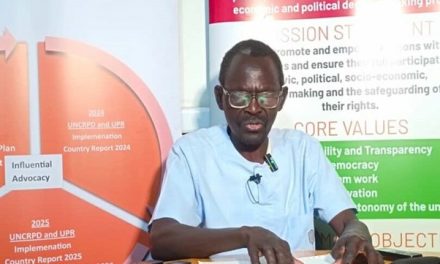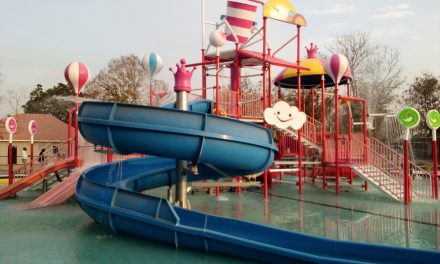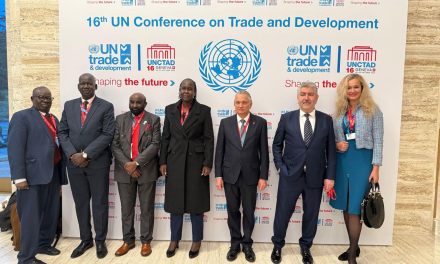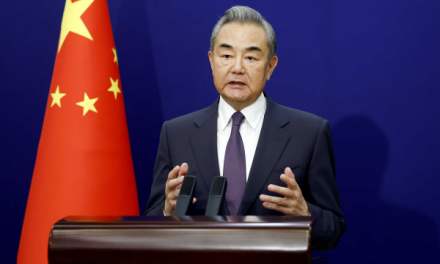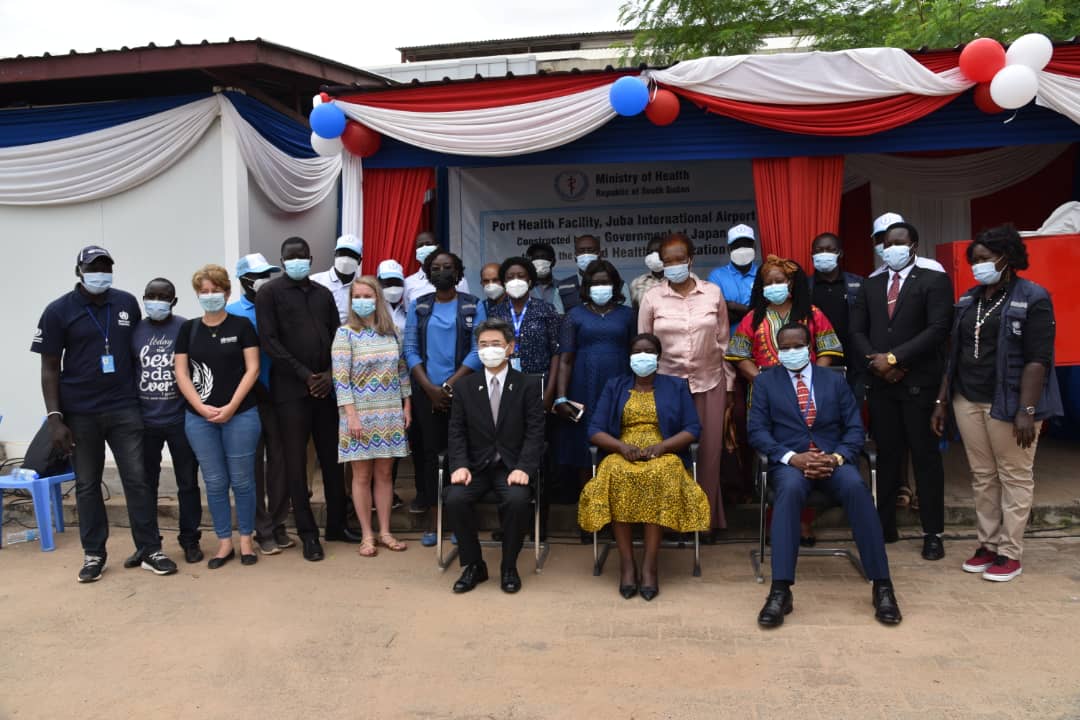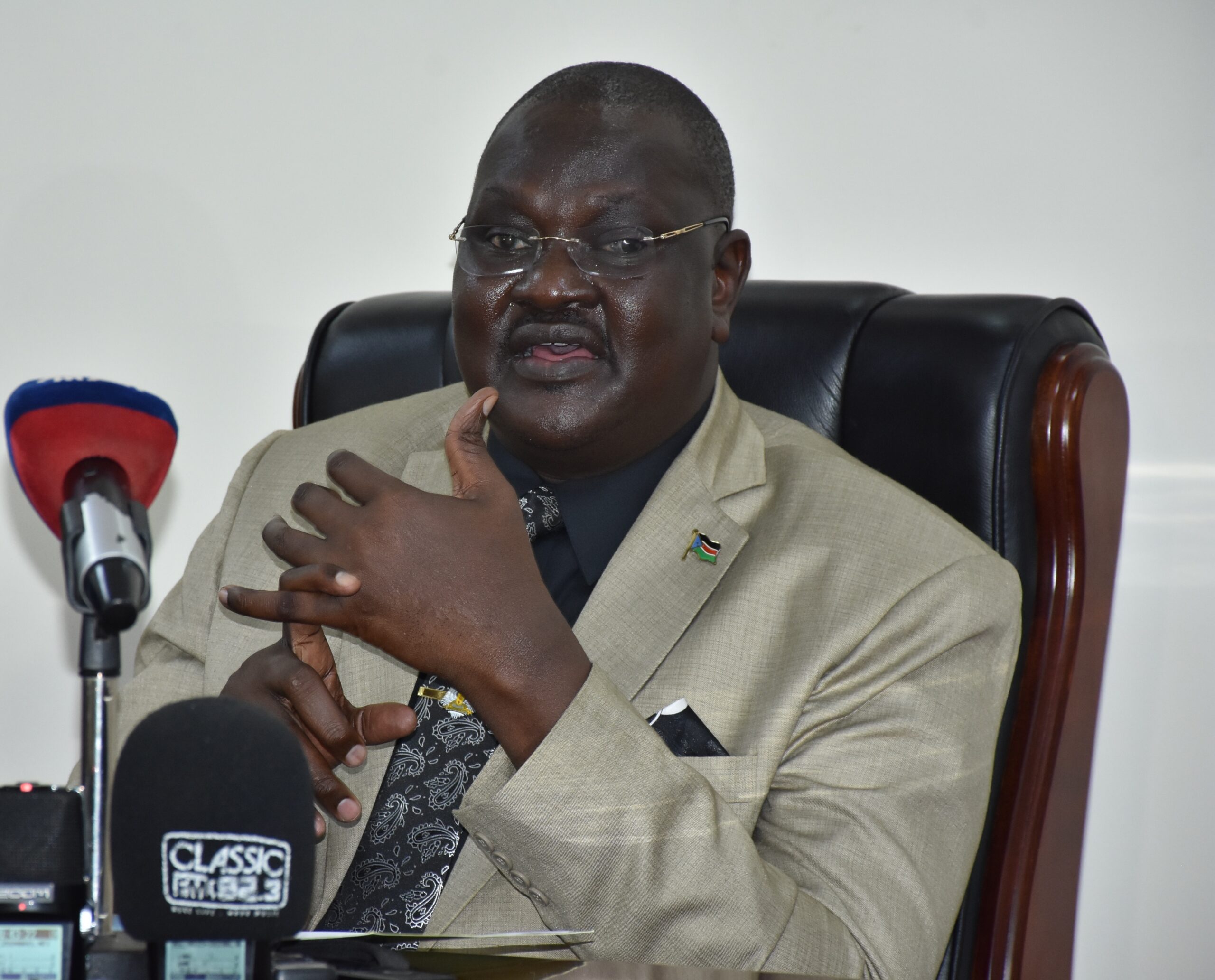
HOW SEWAGE TREATMENT PLANTS IN SOUTH SUDAN ARE FAILING TO PROTECT PUBLIC HEALTH.

By: Rita James
While Juba’s streets bustle with the activity of a growing city, a quiet
environmental disaster unfolds in the shadows.
The New Site sewage treatment plant, meant to manage the city’s waste, has
instead become a breeding ground for illness.
Residents are left to navigate a daily reality where the stench of untreated
sewage and rising disease rates overshadow the city’s progress.
Alex Wani, a resident near the New Site sewage treatment plant, is midst of
this struggle.
“There are very many diseases that already exist just because of the sewage
which is situated in the residential areas,” says Wani, noting that “these
diseases include malaria and skin diseases like scabies, among others. “Alex
Wani’s frustrations are echoed by others in the community.
Deng Abingo, another resident, questions the decision to locate the plant so
close to residential areas, noting that “it is causing diseases like diarrhea, fungi
that are mostly affecting children and the elderly around the area, especially
during the rainy season.”
While Mrs. Elizabeth Adam, a resident of new site, Goryom 2 said “the air
quality in the area deteriorates especially in the morning when the sewage
trucks are transporting the waste to the treatment.’’ She further stresses that during rainy seasons, the flooded sewage treatment
plant over-flows into the streams where people get water for cooking, drinking
and other domestic uses.
And, Mr. William Tongun, a sewage tanker driver, said, he takes the sewage to
the dumping site in new site because it is the only place that has been
designated by the government for sewage waste and he takes like 3 to 4 trips
per day.
The sewage treatment plant in South Sudan is a critical infrastructure that
plays a vital role in maintaining public health and environmental sustainability.
However, the country faces significant challenges in providing adequate
sanitation services, including sewage treatment.
According to 2017 study from the Journal of Public Health in Africa found that,
residents near Soba sewage treatment plant in Khartoum, Sudan (which is also
applicable to South Sudan) are exposed to various health hazards, including,
difficulty in breathing, nausea, and other gastro-intestinal problems.
The study highlights the need for actions from responsible authorities to
address the health threats posed by the sewage treatment plants in the
country.
The residents are crying foul over the health threats posed by the poor sewage
treatment plant that is situated around their residential area.
On the other hand, Terry Alex a medical officer, working in juba teaching
hospital said, from the medical point of view, it’s not good to establish sewage
treatment plant in a residential area because it poses danger to the
community.
“From the medical point of view and from my knowledge of sewage and
dangers it poses to the community and any other person even workers within
the plant, it will not be right to have sewage treatment plant within the area.
Dr. Alex further said waste water is made up of bacteria, virus and chemicals,
so sewage treatment plant should not be established near residential areas.
“Sewage is made up of bacteria, virus and chemicals, so most of the sewage
that we have within this city are open and according to the settings of the
sewage it is not to be put within a residential area or where people are near.”
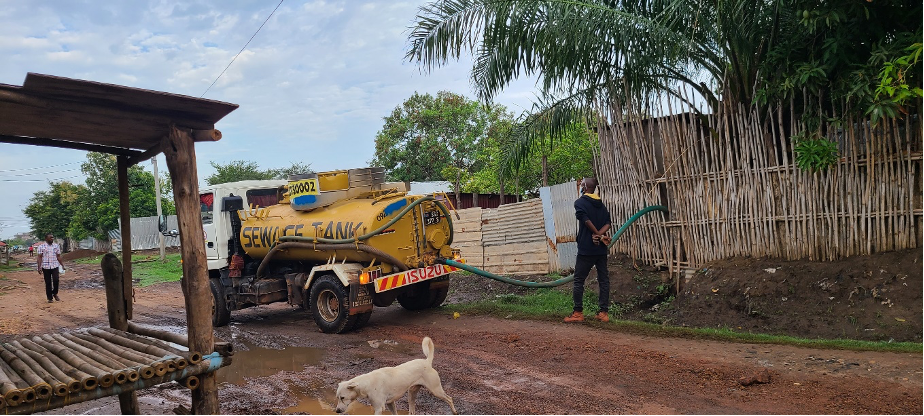
Photo Credit: Rita James
Sewage tank pulling sewage from the pit latrine in tongping residential area.
South Sudan faces enormous water, sanitation, and hygiene challenges, which cause poor health, including malnutrition, school absenteeism, loss of household income, and reduced workforce productivity.
In South Sudan, access to basic water supply has fallen from 41% in 2010 to 39% in 2020. During the same period, access to adequate sanitation rose from 7% to 14%, while open defecation fell slightly from 71% to 63%. For the first time, there is data on hand washing; only 22% of the population have hand washing facilities with soap and water in their homes. According to UNICEF.
Nhial Tiitmamer an Environmentalist said there is supposed to be a buffer zone between the sewage treatment plant and houses of the people living around the area and between the drinking water points and other areas that are important including farming areas as well. He said the sewage treatment plant can release some contaminants that can cause significant harm to the environment and people.
He further said it is not good to have sewage treatment plant close to people because contaminates from the sewage treatment plant can attack people and get sick of disease like respiratory illness, digestive system and other diseases that can lead to death.
“contaminates from the sewage treatment plant can attack people and they can become sick, so people can suffer from a lot of sickness one of them include the respiratory illness and digestive system and other diseases that can lead to death and can cause a lot of discomfort.”
Mr. Tiitmamer stressed that, it is scientifically proven that people living close to sewage treatment plant facilities are exposed to several disease and toxic contaminants like human waste are dangerous to the environment.
“sewage basically which is toxic contaminate like human waste and other contaminates can basically be release into the environment and it is very dangerous over flow is always constantly experience in a treatment place that is not monitored and well maintain it can basically be over flowed and other shot of accident can also occur.”
Population growth in Juba City has led to failed operation of new site sewage treatment plant and shortage of resources and infrastructure to maintain and upgrade sewage treatment plants.
The government established new site sewage treatment plant in 2005 before the signing of the comprehensive peace agreement. At the time, the area had no people but since it has become city, “it’s right time for the government to relocate the place away from citizens.” Said Tongun.
The current population of South Sudan is 11,280,120 as of, July 9, 2024, based on Worldometer elaboration of the latest United Nations data
South Sudan 2023 population is estimated at 11,088,796 people at mid-year. South Sudan population is equivalent to 0.14% of the total world population. South Sudan ranks number 86 in the list of countries (and dependencies) by population. The population density in South Sudan is 18 per Km2 (47 people per mi2). The total land area is 610,952 Km2 (235,890 sq. miles) 28.0 % of the population is urban (3,109,689 people in 2023) the median age in South Sudan is 16.7 years.
Updated on July 16, 2023 with the latest July 2023-July 2024 estimates from the United Nations, Department of Economic and Social Affairs, Population Division. World Population Prospects: The 2022 Revision. (Medium-fertility variant).

Data Source: United Nations – World Population Prospects
According to non-governmental organization WaterAid, more than 93 percent of South Sudanese lack access to an improved toilets—one that ensures hygienic separation of waste from humans. The dearth of water, sanitation, and hygiene (WASH) infrastructure puts millions of people at risk of illness and death from preventable diseases like cholera and acute watery diarrhea.
The Continuation of South Sudan, Land Act, 2009, provides a wide range of guidance in response to emerging environmental management challenges to enable decision makers and resource users make development choices that are economically efficient, socially equitable and environmentally friendly to ensure realization of sustainable development.
The goal of the South Sudan National Environment Policy is to ensure protection and conservation of the environment and sustainable management of renewable natural resources in order to meet the needs of its present population and future generations. And the objectives of the RSS environmental policy seek to:
Improve livelihoods of South Sudanese through sustainable management of the environment and utilization of natural resources;
Build capacity of the government at all levels of governance and other stakeholders for better management of the environment;
Integrate environmental considerations into the development policies, plans, and programs at the community, government and private sector levels;
Promote effective, widespread, and public participation in the conservation and management of the environment.
Meanwhile, a report from the Assessment of Raton Wastewater Lagoon in Juba, which was publish in February 2015, it was estimated that urban sanitation coverage in South Sudan had increased to approximately 19 percent (Water and Sanitation Program WSP in 2010.
However, urban areas such as Juba continue to expand rapidly, while basic services such as sanitation have not kept up with this rapid growth. The exact population numbers for Juba remain contested; but in 2005, the population was estimated to be 163,000. In 2013, the population of Juba was estimated to be 500,000. Despite the significant challenges surrounding urban sanitation, only limited government or donor investments have been made in urban sanitation due to many competing priorities. The main investment that has been made was by the World Bank-managed.
On the other part, Mr. Alison Tukube, a resident of juba also said to address the health hazards and challenges associated with sewage treatment plants in South Sudan and it is crucial to improve infrastructure and maintenance of sewage treatment plants, including increasing public awareness about the importance of sanitation and hygiene.
He stressed that, it is crucial to provide training and resources like, personal protective equipments (PPE) to healthcare professionals to address health hazards related to sewage treatment plants and encourage relevant authorities to prioritize sanitation services and infrastructure development”. Tukube added
Juba, South Sudan Metro Area Population -2024
Line Chart of population level and growth rate for the Juba, South Sudan metro area from 2005 to 2024. The current metro area population of Juba in 2024 is 479,000, a 4.36%increase from 2023. The metro area population of Juba in 2023 was 459,000, a 4.32% increase from 2022. The metro area population of Juba in 2022 was 440,000, a 4.51% increase from 2021. The metro area population of Juba in 2021 was 421,000, a 4.47% increase from 2020.
Data Source: United Nations – World Population Prospects
The sewage treatment plant in South Sudan is critical infrastructure that requires attention and investment to ensure public health and environmental sustainability. Addressing the health hazards and challenges associated with sewage treatment plants is essential to improving the residents’ quality of life.
The environmentalist appealed to the transitional government of the National Unity to comply with the national laws and regulation and international base practices to consider the distance between the neighborhood and other sensible areas like rivers, swamps, wetland and places where people can get exposed.
“ sewage is supposed to be treated, well sided and it should be a considerable distance from the neighborhood and other sensible areas like the River, Swamps, wetland and places where people can get expose, they should be located in the places that are safer and they should comply with national laws and regulation and international base practices so this is what the government should do and it should be done before environmental setting back assessment to manage the issue that I have highlighted.”
He suggested that, people should not live near sewage treatment plant because it is not healthy as they will be smelling something bad every day that can put their lives into danger.
On June 2024, The President of South Sudan, H.E. Salva Kiir Mayardit, signed the country’s Heads of State Initiative Compact on Water and Sanitation a major milestone to ensure the rights of all citizens to water, and good sanitation and hygiene (WASH).
The signing of the Compact on Water and Sanitation marks a significant step forward in improving the water and sanitation situation in South Sudan which faces many climate-related, social and economic challenges.
The WASH Compact stems from the global UN Water Conference in March 2023, held in New York. It is built upon clear commitments that encompass increased budget allocations, innovative sources of financing, and comprehensive plans for the construction of vital water and sanitation infrastructure.
This story has been produced in partnership with InfoNile and Target Media

